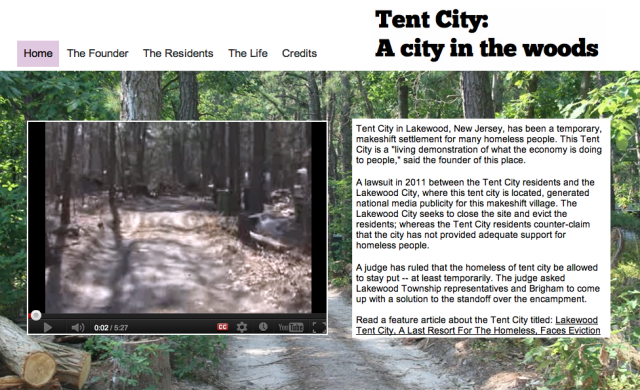Two website creation tools provide a solution to create flash-like, interactive webpages to present multimedia journalism stories. I compared these tools for their pros and cons in presenting a multimedia story which includes typical contents such as text, video, audio, slideshow, and Google map.
And I did it without having to know anything about web design and flash animation – this is a great solution to multimedia journalists who need a quick and easy way to deliver contents on the web.
What is an online webpage editor?
Wix and IM Creator are two “drag-and-drop” online editors that do a similar job: insert contents to web pages (blank or with template), assemble them into a mini website, then publish and share it online – free of charge. And you don’t need to download any program or software to run on your computer – everything is done online.
This is how IM Creator explains their product:
IM-Creator is a new way to create your website: choose a design, insert your content and publish it to the world – all in one simple, clear and seamless process. We initially built IM-Creator as a solution for our friends & family- they were in need of a website but the process frustrated them. It was just too complicated, expensive and confusing- they spent time & money but many of them gave up even before completing the process.
Test use of the two editors: A multimedia story about Tent City
Tent City is a makeshift settlement for homeless people in Lakewood, New Jersey. Over the past few years, this small village has attracted national media attention, as it demonstrates what the economy is doing to the people.
I pulled together some contents about Tent City: a feature article, a video, some photos for a slideshow, and audio interviews of the founder and residents; I also created an interactive Google map showing the location of Tent City.
These contents are put together to produce two multimedia online stories – two versions of the same story, using Wix and IM Creator, respectively. Click the screen shots below to access the two stories: the first one is done with Wix, the second one IM Creator.


Comparing pros and cons of Wix and IM Creator
Both did a good and quick job to create a multimedia project. Here’s some observations of some pros and cons of each editor – for purpose of multimedia story presentation:
Wix Pros: Wix has options to customize almost everything – buttons, links, pictures, text styles, etc. For instance, it has a collection of flash-like navigation buttons and each can be further customized. Wix also allows you to upload audio clips, embed the uploaded audio clips with playback controls which also come with different styles and options.
Wix Cons: The biggest con of Wix is the limited function of Google map – you cannot embed a self-made interactive Google map to the web page. You can only create a simple map using the included template, which is very limited in its function. This seems to be understandable in that this tool was not created with multimedia journalists in mind.
IM Creator Pros: The single biggest pro, for multimedia journalists, is the ability to embed interactive Google map. You may want to check out the map I created showing the location of Tent City in the second version created with IM Creator.
IM Creator Cons: It has some major cons. One such con is that you cannot upload audio clips directly to an IM Creator project. You have to make use of a third-party website called SoundCloud: create an account there, upload your audio, get a link for that audio, then go back to the IM Creator project.
And IM Creator is limited in customization options: there’s not much you can do to customize the look of elements; and I had a difficult time trying to customize the look of the audio playback controls on the page: they come with the default playback control from SoundCould which does not look nice for our purposes.




